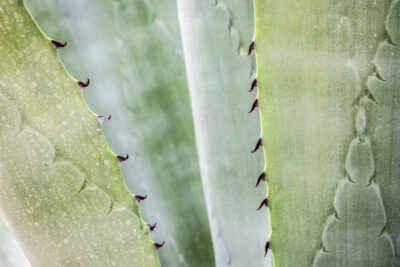
Revive Your Dying Succulent with These Essential Tips

If you're a plant lover, you know that succulents have become incredibly popular in recent years. Their unique shapes, vibrant colors, and low-maintenance nature make them a favorite choice for both indoor and outdoor gardens. However, even the most experienced succulent enthusiasts can run into problems from time to time, especially when it comes to reviving a dying succulent. Whether you've neglected your plant or encountered unexpected issues, knowing how to bring your succulent back to life is crucial to ensure its survival.
We will dive into the essential tips and techniques to revive a dying succulent. We will explore common reasons why succulents may be struggling and provide step-by-step instructions on how to save your plant. From assessing the root system to adjusting watering and light conditions, we will cover all the necessary steps to help your succulent thrive again. Additionally, we will discuss preventive measures to ensure the long-term health of your succulent collection. So, if you're ready to rescue your struggling succulent, read on to discover the secrets of succulent revival.
- Water your succulent sparingly to avoid overwatering
- Ensure that your succulent is receiving enough sunlight
- Water your succulent properly
- Provide well-draining soil
- Protect your succulent from extreme temperatures
- Use well-draining soil to prevent root rot
- Trim back any dead or dying leaves to promote new growth
- Avoid placing your succulent in extremely cold or hot temperatures
- Provide proper ventilation to prevent fungal infections
- Fertilize your succulent with a balanced, diluted fertilizer
- Repot your succulent if it has outgrown its current container
- Keep an eye out for pests and treat them promptly to prevent damage
- Give your succulent some time and patience, as it may take a while to fully recover
- Frequently Asked Questions
Water your succulent sparingly to avoid overwatering
When it comes to succulents, less is definitely more when it comes to watering. These resilient plants are adapted to survive in arid conditions, so overwatering can be detrimental to their health. It's essential to strike the right balance to revive your dying succulent.
One of the most common mistakes succulent owners make is watering their plants too frequently. Succulents have specialized leaves and stems that store water, allowing them to survive in dry environments. Therefore, they have low water requirements compared to other houseplants.
To avoid overwatering, it's crucial to check the moisture level of the soil before watering your succulent. Stick your finger about an inch into the soil - if it feels dry, it's time to water. However, if it still feels moist, hold off on watering for a few more days.
Additionally, it's essential to use well-draining soil and a pot with drainage holes. Excess water should be able to flow freely out of the pot, preventing the roots from sitting in water and potentially rotting. Remember, succulents prefer to be underwatered rather than overwatered.
Watering your succulent sparingly will help prevent root rot and revive your dying plant. Once you've mastered the art of watering, you'll notice your succulent thriving and displaying its vibrant colors once again.
 Causes of Brown and Falling Bottom Leaves in Succulents
Causes of Brown and Falling Bottom Leaves in SucculentsEnsure that your succulent is receiving enough sunlight
One of the most common reasons why succulents start to wither and die is due to a lack of sunlight. Succulents are desert plants that thrive in bright, indirect light. If your succulent is not receiving enough sunlight, it can become weak and frail.
In order to revive your dying succulent, it is essential to ensure that it is placed in a location where it can receive at least six hours of bright, indirect sunlight per day. This can be achieved by placing your succulent near a south-facing window or providing it with artificial grow lights.
Remember to rotate your succulent every few weeks to ensure that all sides of the plant receive equal amounts of sunlight. This will help promote even growth and prevent your succulent from leaning towards the light source.
Water your succulent properly
Another common mistake that can lead to the decline of your succulent is overwatering or underwatering. Succulents have unique water needs and can easily suffer from root rot if they are watered too frequently or if the soil remains wet for extended periods.
To revive your dying succulent, it is crucial to water it properly. The frequency of watering will depend on various factors such as the type of succulent, the climate, and the size of the pot. A general rule of thumb is to water your succulent only when the top inch of soil feels dry to the touch.
When watering your succulent, make sure to thoroughly soak the soil until water drains out of the bottom of the pot. This will ensure that the roots receive enough moisture without sitting in standing water. Allow the soil to dry out completely between waterings to prevent overwatering.
Provide well-draining soil
Succulents are adapted to survive in arid conditions, and they require well-draining soil to prevent root rot. Using regular potting soil can lead to waterlogged roots and eventually kill your succulent.
 Using Miracle-Gro on Succulents: Is it Safe or Harmful?
Using Miracle-Gro on Succulents: Is it Safe or Harmful?To revive your dying succulent, it is essential to provide it with well-draining soil. You can make your own succulent soil mix by combining equal parts of potting soil, perlite, and coarse sand. This mixture will ensure that excess water can easily drain away from the roots, preventing moisture-related issues.
When repotting your succulent, choose a pot with drainage holes to further promote proper drainage. Avoid using pots without drainage holes, as they can trap excess water and lead to root rot.
Protect your succulent from extreme temperatures
Succulents are adapted to thrive in warm and dry conditions, but they are not invincible to extreme temperatures. Exposure to freezing temperatures or extreme heat can cause irreversible damage to your succulent.
To revive your dying succulent, it is crucial to protect it from extreme temperatures. During cold winter months, bring your succulent indoors or provide frost protection by covering it with a cloth or placing it in a greenhouse. Similarly, during scorching summer days, provide shade or move your succulent to a cooler area to prevent sunburn.
By providing your succulent with the right amount of sunlight, proper watering, well-draining soil, and protection from extreme temperatures, you can revive your dying succulent and help it thrive once again.
Use well-draining soil to prevent root rot
Succulents are notorious for their ability to survive in harsh conditions, but even they have their limits. One of the most common problems that succulent owners face is root rot, which can quickly lead to the demise of your beloved plant. To prevent this, it is crucial to use well-draining soil when potting your succulents.
 Can Succulents Survive the Cold Winter Months? Tips for Winter Care
Can Succulents Survive the Cold Winter Months? Tips for Winter CareWhy is well-draining soil important?
Well-draining soil allows excess water to flow through the pot, preventing waterlogged roots. Succulents have shallow root systems that are not adapted to withstand prolonged exposure to moisture. When the soil retains too much water, it creates the perfect environment for root rot-causing fungi and bacteria to thrive.
What kind of soil should you use?
When selecting soil for your succulents, opt for a specialized succulent or cactus mix. These blends are specifically formulated to provide adequate drainage while still retaining enough moisture for the plant's needs. They usually consist of a mix of potting soil, sand, and perlite or pumice.
How do you ensure good drainage?
In addition to using well-draining soil, it is essential to choose a pot with drainage holes. These holes allow excess water to escape, preventing it from pooling at the bottom of the pot. If you have a decorative pot without drainage holes, consider using a secondary pot with drainage and placing it inside the decorative one.
Additional tips:
 The Lifespan of Indoor Succulents: How Long Do They Typically Live?
The Lifespan of Indoor Succulents: How Long Do They Typically Live?- Avoid overwatering your succulents. Allow the soil to dry out completely between waterings.
- Consider adding a layer of gravel or small rocks at the bottom of the pot before adding the soil. This can further improve drainage.
- Provide ample sunlight to your succulents. They thrive in bright, indirect light.
- Monitor the moisture level of the soil by inserting your finger about an inch deep. If it feels dry, it's time to water.
By using well-draining soil and following these tips, you can prevent root rot and give your succulents the best chance at thriving and reviving any dying plants.
Trim back any dead or dying leaves to promote new growth
If you notice that your succulent is looking a bit sad, with dead or dying leaves, it's important to take action. Trimming back any dead or dying leaves is a crucial step in reviving your succulent and encouraging new growth.
Start by carefully examining your succulent and identifying any leaves that are yellow, brown, or shriveled. These are the leaves that need to be removed. Using a pair of sharp, clean scissors or pruning shears, gently trim off these dead or dying leaves at the base, being careful not to damage the healthy leaves or stem.
By removing the dead or dying leaves, you are allowing the succulent to redirect its energy towards new growth. This will also prevent any potential diseases or pests from spreading to the healthy parts of the plant.
After trimming the dead leaves, it's important to give your succulent some time to recover. Place it in a well-lit area, but avoid direct sunlight as it can further stress the plant. Keep the soil slightly moist, but not overly wet, as overwatering can cause root rot.
With proper care and patience, you will soon start to see new growth sprouting from the healthy parts of your succulent. Remember to continue providing the necessary care, such as proper watering and adequate sunlight, to ensure the continued health and vitality of your succulent.
Avoid placing your succulent in extremely cold or hot temperatures
 Easy-care succulents: A guide to slow-growing, low-maintenance plants
Easy-care succulents: A guide to slow-growing, low-maintenance plantsSucculents are known for their ability to thrive in various environments, but extreme temperatures can be detrimental to their health. It's crucial to find the right balance and avoid exposing your succulent to extreme cold or hot conditions.
If you live in an area with cold winters, it's advisable to bring your succulent indoors or provide it with adequate protection during the colder months. Succulents are not frost-resistant, and exposure to freezing temperatures can lead to irreversible damage.
Similarly, extreme heat can also be harmful to your succulent. If you live in a region with scorching summers, it's important to shield your succulent from direct sunlight during the hottest parts of the day. Consider providing some shade or moving your succulent to a cooler area to prevent sunburn and overheating.
Remember, succulents are native to arid and semi-arid regions, where they have adapted to survive in specific temperature ranges. Mimicking these conditions will help your succulent thrive and prevent any potential damage caused by extreme temperatures.
Key Tips:
- Avoid exposing your succulent to freezing temperatures
- Protect your succulent from direct sunlight during the hottest parts of the day
- Consider bringing your succulent indoors during cold winters
- Ensure your succulent is in a temperature range that replicates its natural habitat
Provide proper ventilation to prevent fungal infections
Proper ventilation is crucial for the health of your succulent plants. Without adequate airflow, your succulents are more susceptible to fungal infections, which can lead to their decline and even death.
 Preventing Succulent Stretching: Tips for Compact Growth
Preventing Succulent Stretching: Tips for Compact GrowthWhen it comes to ventilation, there are a few key factors to consider. Firstly, ensure that your succulents are not overcrowded. Overcrowding can restrict air movement and create a humid environment that promotes fungal growth. Give your plants enough space to breathe and grow.
Additionally, placing your succulents in areas with good air circulation can greatly reduce the risk of fungal infections. Avoid keeping them in enclosed spaces or areas with stagnant air. Instead, position your succulents near windows or in open rooms where there is a steady flow of fresh air.
If you notice any signs of fungal infections, such as black spots, powdery mildew, or rotting roots, take immediate action. Isolate the affected succulent from the rest to prevent the spread of the infection. Remove any infected leaves or parts using clean, sterile tools and dispose of them properly.
Remember, prevention is key when it comes to fungal infections. By providing your succulents with proper ventilation, you can create an environment that discourages fungal growth and promotes their overall well-being.
Fertilize your succulent with a balanced, diluted fertilizer
Succulents are known for their ability to thrive in harsh conditions, but even they need a little boost every now and then. Fertilizing your succulent is a great way to provide it with the essential nutrients it needs to stay healthy and vibrant.
When choosing a fertilizer for your succulent, opt for a balanced formula that contains equal amounts of nitrogen, phosphorus, and potassium. This will ensure that your succulent receives all the necessary nutrients in the right proportions.
 Can Frozen Succulents Bounce Back After Suffering Cold Damage?
Can Frozen Succulents Bounce Back After Suffering Cold Damage?It's important to dilute the fertilizer before applying it to your succulent. Follow the instructions on the packaging to determine the appropriate dilution ratio. Using a concentrated fertilizer can burn the roots of your succulent and cause irreversible damage.
Apply the diluted fertilizer to the soil around your succulent, being careful not to get any on the leaves. Water the plant thoroughly after fertilizing to help distribute the nutrients evenly.
Remember to fertilize your succulent sparingly. Over-fertilizing can lead to excessive growth, weak stems, and an increased susceptibility to pests and diseases. A general rule of thumb is to fertilize your succulent once every two to three months during its active growing season, which is typically spring and summer.
Pro Tip: If you're unsure whether your succulent needs fertilizing, pay attention to its growth and overall appearance. If it's growing slowly, has pale leaves, or looks generally unhealthy, it may be a sign that it needs a nutrient boost.
Repot your succulent if it has outgrown its current container
If you notice that your succulent's roots are starting to poke out from the drainage holes or if the plant is top-heavy and leaning to one side, it's a clear sign that it needs to be repotted. Repotting allows your succulent to have more room for growth and prevents it from becoming root-bound.
Here are some essential tips to follow when repotting your succulent:
 Reviving Dead Succulent Roots: A Step-by-Step Guide to Restore Health
Reviving Dead Succulent Roots: A Step-by-Step Guide to Restore Health- Choose the right pot: Look for a pot that is slightly larger than the current one, with drainage holes to prevent waterlogged soil. Opt for a porous material like terracotta to ensure proper airflow.
- Prepare the new pot: Fill the new pot with well-draining succulent soil, leaving enough space at the top for the succulent to fit comfortably.
- Remove the succulent from its current pot: Gently tap the sides of the pot to loosen the soil. Carefully lift the succulent out, holding it by the base to avoid damaging the delicate leaves or stems.
- Inspect the roots: Take a look at the roots and remove any dead or rotten parts. Trim excessively long roots if necessary.
- Place the succulent in the new pot: Position the succulent in the center of the new pot, making sure it sits at the same depth as before. Fill the remaining space with succulent soil, gently pressing it down to secure the plant.
- Allow the succulent to settle: Avoid watering your succulent immediately after repotting. Give it a few days to adjust to its new environment before resuming regular watering.
By repotting your succulent when necessary, you are giving it the opportunity to thrive and continue growing healthy and strong.
Keep an eye out for pests and treat them promptly to prevent damage
Pests can be a common problem for succulent plants, especially when they are not in their healthiest state. It is crucial to keep a vigilant eye out for any signs of pests and take immediate action to prevent further damage.
One of the most common pests that can affect succulents is mealybugs. These tiny white insects can infest the leaves and stems of your plants, sucking out the sap and causing them to weaken and wither. If you notice a cotton-like substance on your succulent's leaves or any small crawling insects, it is a clear indication of a mealybug infestation.
To treat mealybugs, you can start by isolating the affected plant to prevent the infestation from spreading. Then, gently wipe off the bugs using a cotton swab dipped in rubbing alcohol. Make sure to reach all the hidden crevices where the pests might be hiding. For severe infestations, you may need to use an insecticidal soap or neem oil spray to effectively eradicate the pests.
Another common pest to watch out for is aphids. These small insects can cluster on the new growth of your succulent, causing it to become distorted and stunted. If you notice sticky residue on the leaves or black sooty mold, it is a sign of an aphid infestation.
To get rid of aphids, you can start by spraying them off with a strong jet of water. This will help dislodge and remove the pests from your succulent. You can also introduce beneficial insects like ladybugs or lacewings to your garden, as they feed on aphids and can help control their population.
Preventing pest infestations is also vital for the overall health of your succulent. Regularly inspect your plants for any signs of pests, especially if you have recently brought new plants into your collection. Quarantine new additions for a few weeks to ensure they are pest-free before placing them with your existing succulents.
 Perennial Succulents: Low-Maintenance Plants for Easy Care
Perennial Succulents: Low-Maintenance Plants for Easy CareFurthermore, maintaining a clean and well-ventilated growing environment can discourage pests from taking hold. Avoid overwatering your succulents, as excess moisture can attract pests and promote fungal growth. Provide your plants with adequate sunlight and proper air circulation, as healthy succulents are less susceptible to pest attacks.
By keeping a watchful eye for pests and taking prompt action when necessary, you can protect your succulents from damage and help them thrive.
Give your succulent some time and patience, as it may take a while to fully recover
Introduction
Reviving a dying succulent can be a rewarding and fulfilling experience for any plant enthusiast. While it may seem like an uphill battle, with a little time and patience, you can bring your succulent back to life. In this article, we will explore some essential tips to help revive your dying succulent and restore it to its former glory.
1. Assess the Damage
Before you can begin the revival process, it's crucial to assess the extent of the damage. Look closely at your succulent and identify any signs of dehydration, root rot, or pest infestation. This will help you determine the appropriate course of action to take.
2. Adjust Watering Habits
One of the most common causes of succulent death is overwatering. Succulents thrive in dry conditions and do not require frequent watering. To revive your dying succulent, cut back on watering and allow the soil to dry out completely between each watering session. Additionally, ensure that the pot has proper drainage to prevent waterlogged roots.
3. Provide Adequate Sunlight
Succulents love sunlight and need it to thrive. However, too much direct sunlight can also harm them. Find a balance by placing your succulent in a location where it can receive bright, indirect sunlight for a few hours each day. This will help stimulate growth and aid in the revival process.
 Protecting Outdoor Succulents in Heavy Rain: Essential Tips
Protecting Outdoor Succulents in Heavy Rain: Essential Tips4. Trim Away Dead Leaves and Stems
To promote new growth, it's essential to remove any dead or decaying leaves and stems from your succulent. Use clean and sharp scissors or pruning shears to carefully trim away the damaged parts. This will encourage the plant to redirect its energy towards healthy growth.
5. Address Root Issues
If your succulent is showing signs of root rot, it's crucial to address the problem promptly. Gently remove the plant from its pot and carefully inspect the roots. Trim away any mushy or blackened roots and allow the remaining healthy roots to dry out for a day or two. Repot the succulent in fresh, well-draining soil to prevent further root issues.
6. Consider Fertilization
To give your dying succulent an extra boost, consider fertilizing it. Choose a balanced, water-soluble fertilizer specifically formulated for succulents and follow the instructions on the packaging. Be cautious not to overfertilize, as this can do more harm than good.
7. Be Patient
Reviving a dying succulent takes time, and it's important to be patient throughout the process. Monitor your succulent's progress and make any necessary adjustments to its care routine. With consistent care and attention, you'll soon see signs of life and a healthier, more vibrant succulent.
Reviving a dying succulent is possible with the right techniques and a little TLC. By assessing the damage, adjusting watering habits, providing adequate sunlight, trimming away dead parts, addressing root issues, considering fertilization, and being patient, you can bring your succulent back to life. Remember, each succulent is unique, so it's essential to pay attention to its specific needs. With these essential tips, your dying succulent will have a fighting chance to thrive once again.
Frequently Asked Questions
1. Why is my succulent dying?
There could be several reasons for your succulent dying, including overwatering, lack of sunlight, or poor drainage.
2. How often should I water my succulent?
Succulents generally prefer to be underwatered rather than overwatered. Water them only when the soil is completely dry, which is typically every 1-2 weeks.
3. Can I revive a completely shriveled succulent?
It is possible to revive a shriveled succulent, but it may take time and patience. Remove any rotten parts, repot in well-draining soil, and gradually increase watering as the plant starts to recover.
4. Should I fertilize my dying succulent?
Fertilizing a dying succulent may not be the best idea. Focus on correcting the watering and light conditions first. Once the plant starts to recover, you can consider adding a diluted succulent fertilizer according to the instructions.
If you want to read more articles similar to Revive Your Dying Succulent with These Essential Tips, you can visit the Care and Maintenance category.






You Must Read